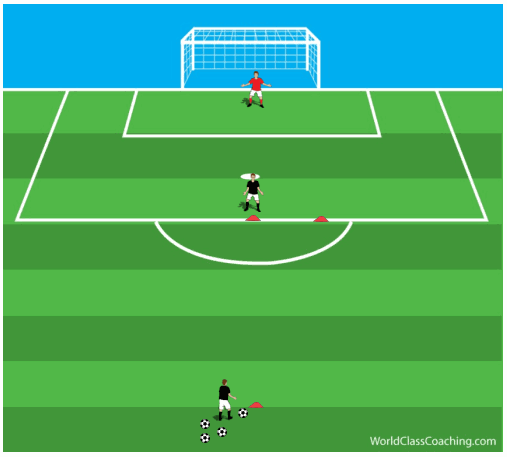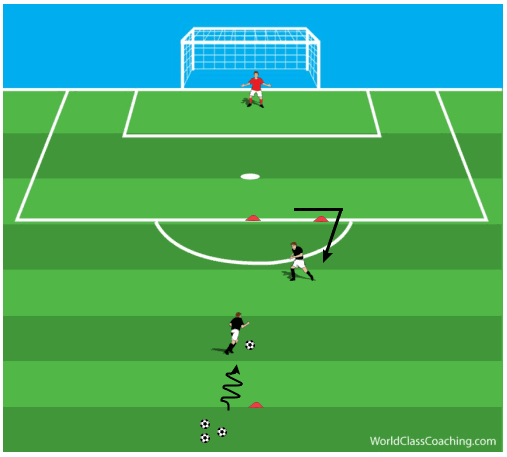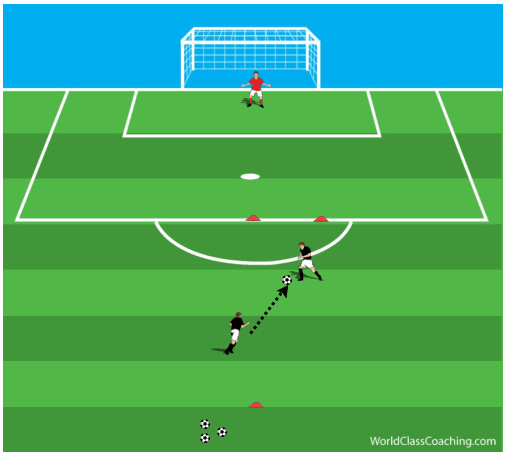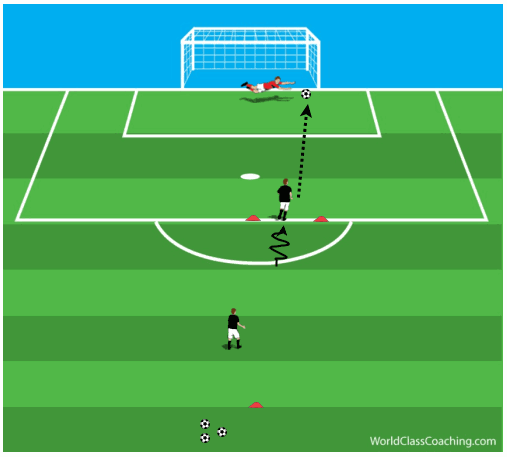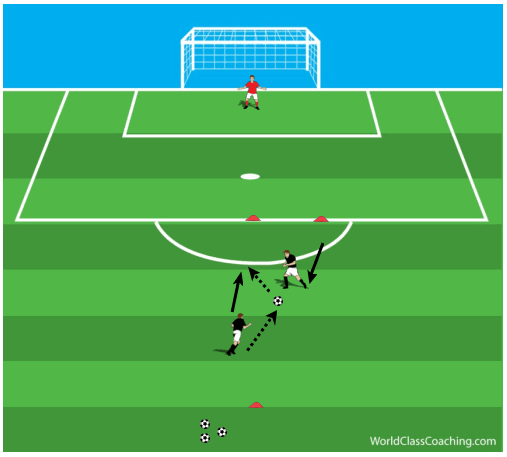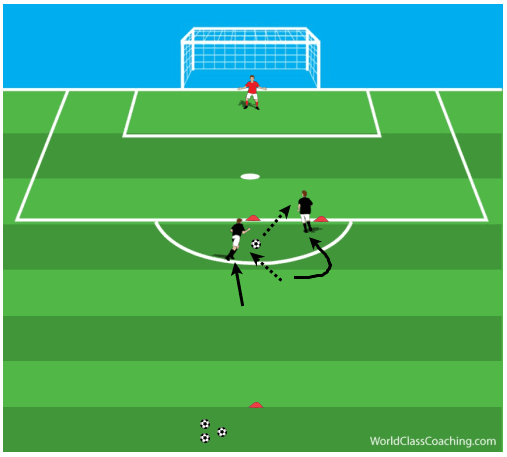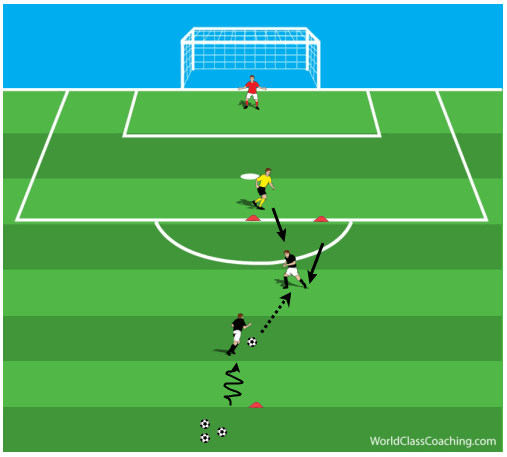By Justin Cresser
As mentioned several weeks back in our article entitled ‘Functional Training of The Centre Midfielder’, every so often we will present position-specific conditioning exercises. Today’s article focuses on strikers and attacking midfielders.
One of the most difficult tasks for any team is breaking down defenses in the attacking third of the field. In this area, defenses tend to be very compact and defending players more often than not will outnumber their attacking opponents. Strikers are marked very closely, and are immediately closed down as soon as they receive balls. As such, players in this position have to be very adept at receiving passes under pressure, as well as creating space to shoot in tight spaces. These actions involve rapid changes of direction and checking quickly into space and highlight the importance of agility training for players in this position.
Today’s activity incorporates the actions discussed above as well as a finishing component. Divide your strikers and attacking midfielders into groups of two. One group works while the other groups rest. Place two cones on the top edge of the 18-yard box: the first in line with the centre of the goal and the second in line with the right goal post. Have one player stand behind the first cone with their back to goal. This will be your striker. Place a third cone 20 yards from the top of the 18-yard box so that it is also in line with centre of the goal. Have the other player stand at this cone with a ball at their feet. This will be your attacking midfielder (Figure 1).
Play is initiated with the attacking midfielder dribbling at speed towards goal. As soon as this player takes their first touch forwards, the striker will backpedal towards the cone to their left and then check quickly towards the dribbling midfielder (Figure 2).
The dribbling midfielder should play a pass into the feet of the striker at the instant the striker accelerates towards them (Figure 3).
Instruct the striker to take their first touch towards goal and then finish on net with their second touch (Figure 4). These actions must be done at game speed.
As soon as the striker shoots on goal, have both players run back to their respective starting positions and then immediately repeat the process. Have the players perform a total of 5 repetitions (1 set), which should take no longer than 45seconds, and then rest for 2 to 3 minutes. This gives a work-to-rest ratio of approximately 1:4 and allows us to condition the anaerobic system of the players as well. Ensure that the two players switch roles after each set and have the second group of players go, while the other one rests.
Note: Because the players perform 5 repetitions in quick succession, the coach must ensure they place an adequate supply of balls at the cone marking the starting position of the attacking midfielder.
COACHING POINTS:
- Ensure that the striker backpedals and checks into space as fast as possible, but under control. Body control is especially important as they are about to receive the ball at their feet
- It is important that the transition from backpedaling to sprinting forwards be smooth and as quickly as possible
- Encourage firm and accurate passes from the dribbling player into the feet of the striker. This player must also be dribbling with their head up so that they can make the pass at the moment the striker accelerates towards them
- A soft first touch, towards goal, is required from the striker. As such, they must judge the weight and line of the pass, and adjust their body position so that they can take their first touch in the direction of the net.
- This exercise does not involve opposition, so it is important that you encourage your players to do all actions at game speed
VARIATION:
You can vary this activity by changing the way the striker takes their first touch. For example, have them begin the exercise by taking their first touch with the outside of the foot. You can then have them perform a half-turn where they receive the ball with back foot. You should also make sure you change the position of the second cone, so that the players start by backpedaling towards their left and then accelerating forwards.
PROGRESSION:
After performing 1 or 2 sets, you should progress the exercise in order to add variety to the session as well as to continuously challenge the player. Consider the following variations to the activity described above to progress the exercise:
1) Wall-pass between Attacking Mid and Striker
For this variation, the initial movements are the same; however, have the attacking midfielder shoot on net after playing a wall pass with the striker (Figure 5). The return pass from the striker and the shot on net should be limited to one touch.
2) Double Pass between Attacking Mid and Striker
This variation is similar to the wall-pass example described above. However, after receiving the return pass, the attacking midfielder will play a one-touch pass into the path of the striker who will immediately spin and make a curved run towards net (Figure 6). The striker then finishes on net with their first touch. It is important that the spin and the run of the striker be done at game speed!
3) Add Opposition
For this progression, create a 1 v 1 situation by adding a central defender. This defender starts at the first cone and is only allowed to move when the midfielder plays the pass into the striker. The striker must now attempt to take on, and beat, the defender before finishing on goal (Figure 7).
Best of luck,
Justin
Justin Cresser – Has coached soccer at various levels both in North America and abroad (Hong Kong and Africa). His most recent position was as the Assistant Technical Director at the Soccer Club of Toronto. He has his National Diploma from the NSCAA and is also a certified strength and conditioning coach.

